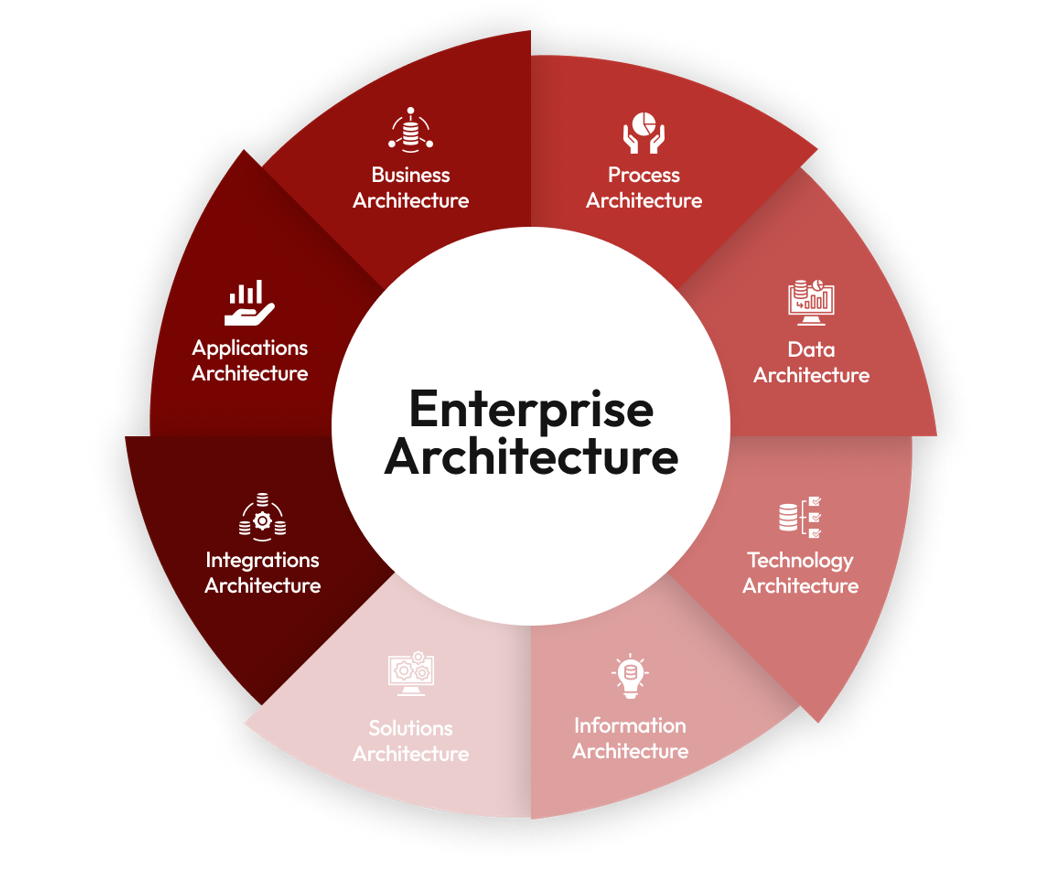You had the vision. You secured the budget. You even picked the right framework. But now? Your enterprise architecture initiative feels more like a theoretical exercise than a transformation engine. People are confused, deadlines are slipping, and the business is asking, “What exactly are we getting out of this?” This is more common than you’d initially think. Many teams face similar enterprise architecture challenges during rollout.
Implementing enterprise architecture often feels like trying to steer a container ship with a canoe paddle. The concept makes sense. The potential is huge. But the actual implementation? That’s where most efforts go to die.
The truth is, enterprise architecture rarely fails because of technical flaws. It fails because of blind spots—disconnects between strategy and execution, culture and change, tools and usability.
In this article, you’ll learn the seven most common challenges that derail EA implementations—and more importantly, how to spot them early and sidestep them completely.
Challenge 1: Misalignment Between IT and Business Goals

Enterprise architecture is supposed to be the bridge between business strategy and IT execution. But too often, that bridge never gets built. Instead, you end up with siloed roadmaps—one from the business side, focused on market growth and customer experience, and another from IT, centred around systems, platforms, and upgrades.
The result? EA initiatives that look impressive on paper but fail to deliver measurable business value.
Why these enterprise architecture challenges happen:
Most EA efforts start within IT, often with limited input from business leaders. The architecture gets designed based on what’s technically feasible or elegant—not what’s commercially urgent. And without strong collaboration from the outset, business stakeholders see EA as an IT-only project. That perception kills momentum.
What to watch for:
- EA deliverables that don’t tie clearly to business KPIs
- Vague or outdated “vision” statements
- Low attendance from business units in EA workshops or steering committees
What to do instead:
Start by co-owning the problem. Bring business leaders into the EA process early—not just for sign-off, but for shaping priorities. Use language they understand. Don’t talk about systems integration; talk about improving customer onboarding or reducing operational risk. If you can link EA to their priorities, you’ll get their engagement—and your architecture will actually get used. As McKinsey points out, enterprise architecture creates impact when it helps bridge the gap between technology and business priorities.
Challenge 2: Lack of Organisational Buy-In
Even the most elegant enterprise architecture framework is useless without people willing to use it. And that’s where many initiatives hit a wall—nobody outside of the EA team sees the point.
When EA is seen as another layer of bureaucracy or a “nice to have” concept rather than a tool for solving real problems, it gets ignored. Or worse, actively resisted.
Why these enterprise architecture challenges happen:
Buy-in isn’t just about approval from the C-suite—it’s about widespread belief across the organisation that EA is worth the effort. But most people don’t care about diagrams and frameworks. They care about what’s going to make their job easier or harder. If EA doesn’t help them solve a pain they already feel, it will never take hold.
What to watch for:
- EA perceived as slowing down delivery
- Teams bypassing architectural review processes
- High-level endorsement with no middle-management support
What to do instead:
Earn trust by delivering quick wins. Start with use cases that have visible impact—improving cross-departmental workflows, eliminating redundant systems, or speeding up time-to-market. Show that EA isn’t just about structure—it’s about enabling smarter, faster decisions. And don’t forget middle management; if they’re not bought in, they’ll quietly derail the rollout.
Challenge 3: Overly Complex Frameworks with No Practicality
You chose a respected EA framework. It ticked all the boxes: comprehensive, methodical, best practice-based. But somewhere along the way, it started to feel like you were drowning in models, layers, and acronyms, with little actual progress to show for it.
Why these enterprise architecture challenges happen:
Many frameworks are built for completeness, not usability. They provide a detailed map, but no GPS. So, unless your team is trained, resourced, and deeply committed, you end up bogged down in process without ever delivering outcomes.
And let’s be honest—how many stakeholders in your organisation have the patience (or interest) to wade through a 200-page architecture document?
What to watch for:
- Teams spending more time filling out templates than solving problems
- EA outputs not being used in decision-making
- Complaints that the framework is “too heavy” or “academic”
What to do instead:
Customise your approach. Use the framework as a guide—not a rulebook. Strip it back to the essentials your organisation actually needs, and build from there. Focus on producing artefacts that inform action, not just documentation. Think of EA as a service, not a deliverable—what does the business need from architecture today, and how can you meet that with less noise?
Challenge 4: Tool Overload or Poor Tool Integration
Enterprise architecture promises a unified view of your systems, processes, and capabilities. But when the tools you’re using to build that view are scattered, clunky, or don’t talk to each other, you end up with digital chaos instead of clarity.
Why these enterprise architecture challenges happen:
In many organisations, EA tooling evolves reactively—an Excel sheet here, a Visio diagram there, maybe an expensive platform purchased under pressure. But without a clear plan for integration and governance, tools become silos. You lose version control, people stop trusting the data, and collaboration breaks down.
What to watch for:
- EA data living in too many disconnected places
- Stakeholders unsure where to find the “latest” version
- Tools that require manual syncing or duplication of work
What to do instead:
Keep it simple and centralised. Choose tools that integrate well with your existing ecosystem and that non-EA users can actually understand. Don’t overinvest in tech before the process and people are ready. Start with what you need to solve your biggest pain point today—and scale up only when it drives clear value.
Challenge 5: Cultural Resistance to Change
You can have the right framework, the right tools, and even a solid roadmap—but if your culture isn’t ready for change, none of it will stick. Resistance doesn’t always come in the form of open pushback. Often, it’s quiet: people ignoring guidelines, skipping architecture reviews, or reverting to “how we’ve always done things.”
Why these enterprise architecture challenges happen:
Enterprise architecture often introduces new ways of thinking—more structured planning, cross-functional collaboration, longer-term decision-making. For teams used to moving fast or operating independently, this feels like red tape. They see EA as a threat to their autonomy or speed.
What to watch for:
- Teams avoiding engagement with EA initiatives
- Senior leaders agreeing in meetings but not reinforcing change afterward
- “Shadow IT” workarounds popping up
What to do instead:
Acknowledge the discomfort. Change management isn’t a nice-to-have—it’s essential. Communicate early, often, and in plain language about why EA matters and what’s in it for them. Involve respected team members as champions to model the new ways of working. And be patient; culture shifts slowly, but with the right momentum, it can work in your favour.
Challenge 6: Underestimating the Resource Commitment
Enterprise architecture is not a one-off project—it’s an ongoing capability. But too many organisations treat it like a short-term initiative, expecting quick wins with minimal investment. Then they wonder why it stalls.
Why these enterprise architecture challenges happen:
Leadership often buys into the idea of EA, but not the reality of what it takes to embed it. That includes skilled people, time, and budget—not just to design the architecture, but to maintain it, communicate it, and drive adoption across the business.
What to watch for:
- EA teams made up of one or two people wearing multiple hats
- No dedicated budget for tooling, training, or stakeholder engagement
- EA milestones constantly pushed back due to “competing priorities”
What to do instead:
Treat EA like a strategic function, not a side task. Make sure it’s properly staffed, with clear roles and responsibilities. Set realistic timelines and communicate that this is a long-term investment. Without the right level of resourcing, you’re building a skyscraper on shallow foundations—it won’t last.
Challenge 7: Lack of Clear Metrics and Outcomes
If you can’t measure success, you can’t prove value. Yet many enterprise architecture programmes launch without any clear way to track progress or impact. That’s a fast track to scepticism and budget cuts.
Why these enterprise architecture challenges happen:
EA outcomes are often intangible—better alignment, improved agility, reduced duplication. These are important, but hard to quantify without the right KPIs. And if the business doesn’t see visible returns, they’ll see EA as overhead rather than a driver of value.
What to watch for:
- EA success being described vaguely (“more strategic alignment”)
- No link between EA work and business performance metrics
- Difficulty justifying continued investment in EA initiatives
What to do instead:
Define what success looks like from day one. Choose metrics that matter to your stakeholders—things like time to onboard new systems, reduction in redundant apps, or speed of delivering new capabilities. Track progress and share it regularly. The more clearly you can show the impact of EA, the more support you’ll get.
How to Steer Clear of These Enterprise Architecture Challenges and Move Forward
Enterprise architecture doesn’t fail because it’s a flawed idea—it fails because it’s easy to misapply. From misalignment and poor tooling to cultural pushback and lack of metrics, most EA challenges have little to do with technology and everything to do with people, process, and clarity.
If you want your EA initiative to succeed, focus less on frameworks and more on foundations:
- Align with business goals from day one
- Start small and prove value early
- Pick tools that integrate, not isolate
- Don’t underestimate the power of culture
- Measure what matters—and share your wins
You’re not trying to build the perfect architecture. You’re trying to build a useful one—one that helps your organisation make smarter, faster, and more strategic decisions.
Keep it practical. Keep it collaborative. And above all, keep it grounded in outcomes.



